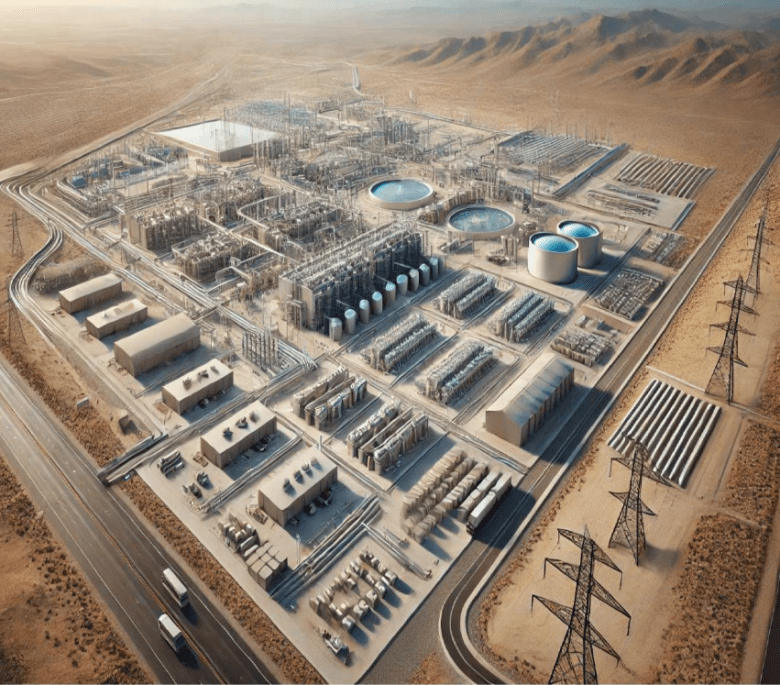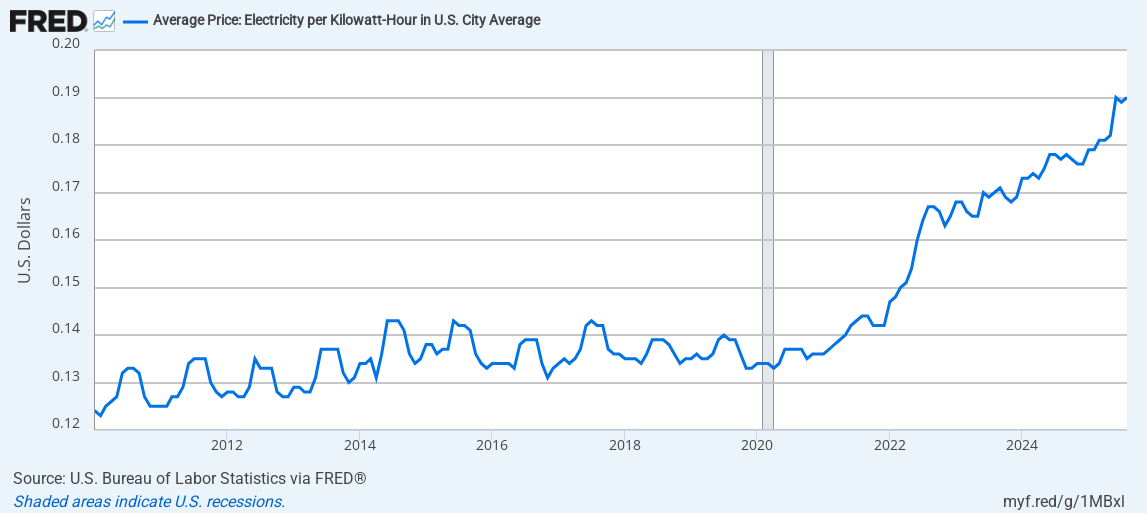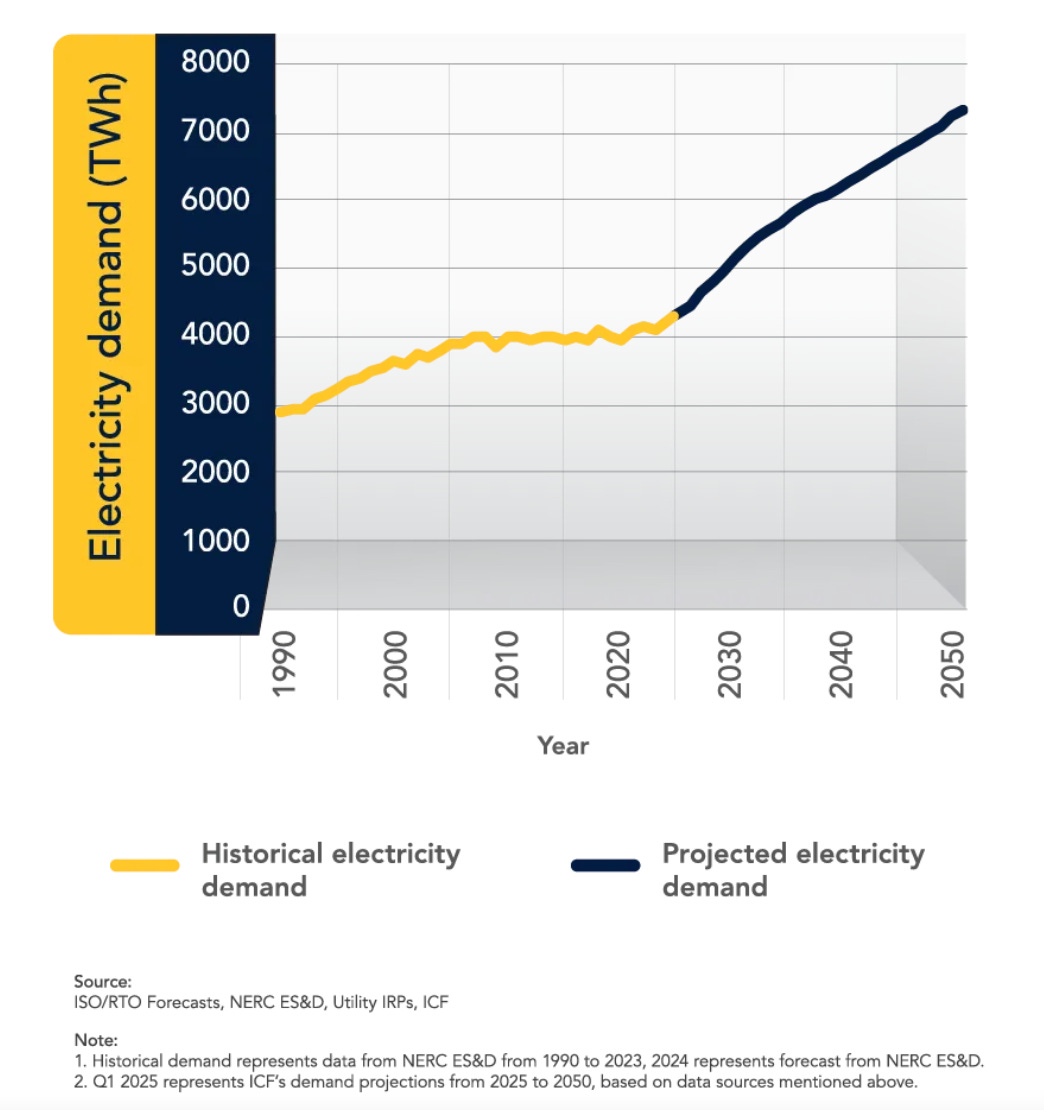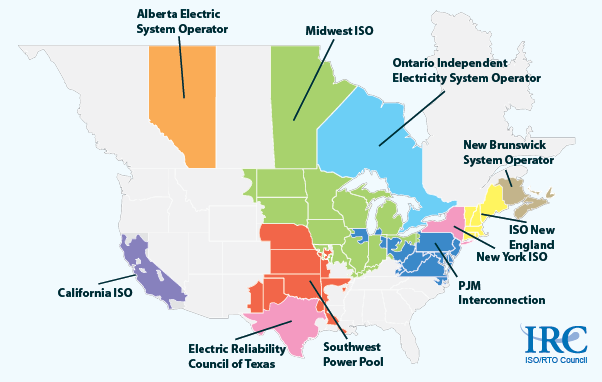AI and EVs spark demand for liberalized electricity markets
Leveraging economics' most basic laws will help us combat higher prices and climate change
New Mexico’s newest, largest AI data center project, Project Jupiter, in Santa Teresa, NM, is dominating New Mexican energy and economic development news. The $140 Billion industrial revenue bond (IRB), possibly the biggest IRB to ever hit the U.S. market, is setting the tone for next-level energy demand that’s to be expected moving forward.
The project will ultimately require a gigawatt of electricity to operate - which is objectively loco. For context, that’s roughly 25% of New Mexico’s current electricity generation capacity today.
When you start to think about the increased energy demand that not only these data centers will prompt, but the electrification of everything from transportation to household appliances to industrial processes, the underwhelming status of our current grid capabilities come into perspective. On top of this, the Federal Government is waging war on the cheapest forms of energy on the market, making local, state, and regional action paramount to fighting both climate change and higher electricity costs.
Oracle and Open AI, the companies behind Project Jupiter and the Stargate initiative, are going to build their own on-site micro-grid and electricity generation - which will apparently be gas-powered first and solar-powered later - but local constituents are understandably worried about the legitimacy of these claims. Legally, Project Jupiter can build any type of electricity generation that they please as long as they follow the rules within the Energy Transition Act.
New Mexico, in 2019, passed the Energy Transition Act (ETA), which directs electric utilities to reach 100% renewable energy by 2045. The state is currently generating around 50% of its electricity from renewable sources, but as data centers, EV chargers, and other new technologies drive electricity prices up across the country, sub-national governments (because the Federal Government is currently… erm… distracted) need to be preparing for an unprecedented demand increase on their own. Electricity prices have been increasing at an increasing rate since covid, and economists expect this to accelerate further.
We should be thinking about economic and environmental policy that welcomes AI investment into communities that want to attract jobs and capital investment without blowing up electricity prices or throwing away climate goals.
Many states like New Mexico have Renewable Portfolio Standards (RPS), which mandate electric utilities to reach net zero by mid-century, but another scheme that works hand-in-hand with an RPS is liberalized electricity markets. While the RPS offers long-term direction, markets can spur short- and medium-term incentives. Many decarbonizing regions around the world have mature, competitive electricity markets that drive price savings and energy decarbonization, including some regions in the US and Europe, operate more independently than the rest of the nation:
While some utilities like PNM in Central New Mexico are starting to participate in the California ISO (CAISO) day-ahead market, there’s an opportunity to create a more integrated, liberalized market in the West called the Western RTO.
Liberalized markets create an environment where electricity generators win by having the cheapest electricity - creating competition that ultimately benefits consumers. I wrote a post earlier this summer that explains the economics of electricity markets and how MAGA is getting an F in economics. Here’s a link:
In summary, our electric grids in the West (outside of California) currently operate with regulated monopolies owning most of the power generation and some outside companies generating energy through power purchase agreements (PPAs). When one entity owns most of the generation supply, even when regulated by the government, incentives to decarbonize are only dictated by law.
In contrast, a competitive electricity market aligns incentives for environmentalists and consumers through the basic laws of economics. In California, hundreds of electricity generators compete hourly in an auction in hopes to get their electricity sent into the grid. Renewable electricity offers basically-free energy for several hours a day, which undercuts more expensive, price-setting fossil fuels. Any difference between the cost of renewables and the cost of the most expensive electricity purchased in that hour’s auction becomes profit for renewable generators.
So, in a liberalized market, as long as the market stays adequately competitive, renewables and grid-scale batteries offer investors profits and incentives that continuously drive prices and emissions down. This is why something like the Western RTO could be a powerful tool to deal with increasing electricity demand, higher prices, and climate change.
The Western RTO is a proposed regional electricity market that would at least include Arizona, California, Colorado, Nevada, and New Mexico, with potential to add Washington, Oregon, Montana, Idaho, Wyoming, and Utah. An RTO would be responsible for organizing energy day-ahead and spot markets, transmission planning, and more. There are plenty of benefits for each of the states involved besides lower electricity prices and emissions. Participants in the market broaden the energy resources available to all of them - making the grid more efficient and reliable - especially during extreme weather events.
The National Caucus of Environmental Legislators notes that “Colorado and Nevada have both adopted legislation to require transmission organizations to join RTO’s by 2030… Other RTO’s like Southwest Power Pool (SPP) and CAISO are looking to expand into the Western states, creating an opportunity for Western states to join an already formed RTO.” As you can imagine, it’s difficult to get 11 different states with varying politics to get on the same page about anything, but each additional state that passes legislation like Colorado and Nevada means the RTO can come closer to realization and be more effective.
Pairing organized electricity markets with an economy-wide renewable portfolio standard offers a near bullet-proof electricity and climate plan. While the market ensures short- and medium-term incentives for clean energy investors, the RPS locks in long-term direction for energy markets.
Western U.S. states should be thinking about how they’re going to fight climate change and high electricity prices without the help of the Federal Government. As I noted when Trump was elected for his second term, climate policies are going to be left up to the states, and the most politically feasible solutions should be considered.
Volatile energy policy at the national level will result in two very different types of American states: those that “believe” in renewables and science, and those that believe Trump’s politicized story of energy and hold onto aging coal and gas power plants. AI data centers, electric vehicles, and the technologies of tomorrow are going to demand more and more electricity. Increased electricity demand will test our grids, but regions that utilize the laws of economics will win.







